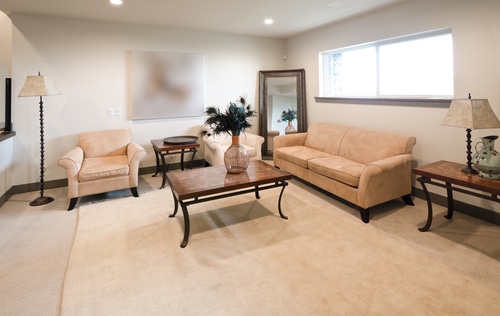
Managing Sandy-Loam Drainage With Basement Waterproofing In Sterling Heights, MI
Many Sterling Heights residents are familiar with the challenges of the sandy-loam soil prevalent in the area. While the soil’s drainage characteristics benefit cultivation and landscaping, they can also create problems keeping basements dry. The best way to protect your basement against moisture is with a comprehensive waterproofing system that includes French Drains, proper soil grade, and backup Sump Pumps.
Comprehending Sandy Loams And Their Drainage Characteristics
Sandy-loam contains a mix of sand and silt. It also contains a small amount of clay. Sand content is high, allowing water to drain quickly. The basements of homes can be at risk if this benefit is not properly managed. Without proper management, water will accumulate around a foundation, causing mold to grow, structural damage, and seepage.
In this area, homeowners must understand the relationship of soil type to water flow to develop an effective drainage system and waterproofing strategy. For more information, see a comprehensive basement waterproofing plan for Sterling Heights, MI.
French Drains Are A Proven Method Of Diverting Groundwater
French drains can be installed in sandy-loam soils to help manage water flow. A French drainage system is a perforated pipe enclosed in fabric and gravel buried within a trench. This system diverts groundwater and captures it away from a home’s foundation.
French drains function exceptionally well in sandy loam conditions because the soil allows water to filter quickly and reach the drain pipe. Once installed, these drains significantly reduce the risk of water infiltration. The right placement is essential. This usually means around the perimeter or in trouble spots where water pools often after rain.
Soil Grading As Your First Line of Defense
French drains work well for managing subsurface waters, but grading the landscape surrounding your home will handle surface water. Soil grading describes the slope of your foundation. The slope of the soil should be at least six inches away from your foundation over the first 10 feet. This simple, but often ignored technique allows rainwater and snow to naturally flow from the foundation away rather than collect at the base.
Grading can be especially important for homes that are built on sandy soil. As water quickly seeps into the top layer, improper grading may cause that water to head straight towards your foundation walls. Regarding a yard with compacted dirt and topsoil, adding grass or some other type of ground cover can help create a better barrier against water.
Backup Pumps Provide Protection When Needed
Even if French drains are in place and the soil is graded, weather conditions or system failures may still be a concern. The backup sump system can be invaluable. As traditional sump-pump systems rely on electrical power, they are at risk during storms or when there is a lot of outage. If your main pump stops working, you can still protect your basement with a backup battery-powered pump or water-powered pump.
Sump pits tend to fill quickly due to soil permeability in sandy-loam conditions. Basements may flood rapidly if a reliable pump system is not in place. Backup systems offer peace of heart, particularly in Michigan’s rainy spring and early summer.
Why Local Expertise Is Important
Waterproofing is not a one-size-fits-all solution. What works on a home in a region rich in clay won’t work as well in Sterling Heights because of the sandy loam. To avoid this, it is important to consult professionals who have a thorough understanding of local soil conditions, weather patterns, and building codes.
An experienced contractor will evaluate your home’s grade, determine its drainage patterns, and then recommend a solution that includes all necessary elements, from French Drains and Sump Pumps to gutter extensions and downspout re-direction. They’ll also ensure that all installation is done according to code.
Conclusion
The soil types in Sterling Heights are sandy-loam, so a multifaceted approach is required to manage basement moisture. French drains regulate underground water movement. Grading and proper drainage address surface runoff. Backup sump pumps offer emergency protection. Together, the components of a waterproofing system help homeowners protect their homes’ structural integrity, avoid costly damages, and improve indoor air quality. The right plan will ensure that your basement is dry and safe no matter the weather.
